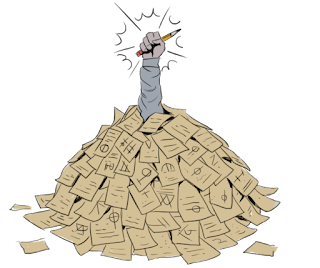When people start getting into drawing, they tend to use one point perspective a lot.
Some people dislike it - they think it's very dull, too simple and seems amateur.
But people often underestimate it. One point perspective can actually convey a lot of meaning and power.
It's also great for showing depth if done well and it's nice to use for symmerrical images or designs.
Below are strong impressions that one point perspective can convey:
Some people dislike it - they think it's very dull, too simple and seems amateur.
But people often underestimate it. One point perspective can actually convey a lot of meaning and power.
It's also great for showing depth if done well and it's nice to use for symmerrical images or designs.
Below are strong impressions that one point perspective can convey:
 Informative
Informative
--------------------------------------------------------------------------------
Exercise 01
A fun exercise to get to know one point perspective better
is to create your own factory or garage.
Make it full of boxes and other objects that belong in a
factory or garage. If you find it to hard to draw
other detailed objects you can just stick to boxes.
(Always keep in mind the planes of the boxes in relation to the vanishing point).

A fun exercise to get to know one point perspective better
is to create your own factory or garage.
Make it full of boxes and other objects that belong in a
factory or garage. If you find it to hard to draw
other detailed objects you can just stick to boxes.
(Always keep in mind the planes of the boxes in relation to the vanishing point).

Here are three rough drawings I drew in one point perspective, but the horizon line in each drawing is in a different place. The images below have the horizon line at the top, then in the middle, then in the bottom.
So this exercise is for you to draw whatever you want but to have the horizon line in a different place each time.






















